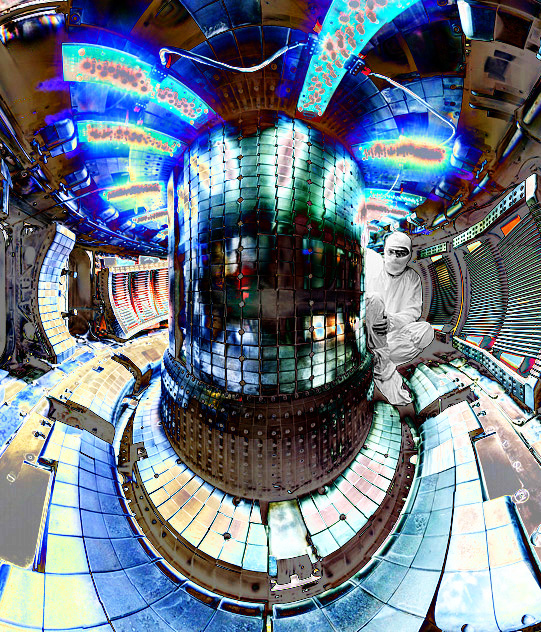Fusion power coming closer

MIT has made another step towards nuclear fusion technology.
In the quest for fusion energy, scientists have spent decades experimenting with ways to make plasma fuel hot and dense enough to generate significant fusion power.
At MIT, researchers are using radio-frequency (RF) heating in their Alcator C-Mod tokamak – an experimental magnetic confinement fusion reactor.
A team at MIT’s Plasma Science and Fusion Center (PSFC), along with colleagues in Belgium and the UK, have now come up with a new method of heating fusion plasmas in tokamaks.
The new method is able to raise trace amounts of ions to megaelectronvolt (MeV) energies — an order of magnitude greater than previously achieved.
“These higher energy ranges are in the same range as activated fusion products,” PSFC research scientist John C Wright explains.
“To be able to create such energetic ions in a non-activated device — not doing a huge amount of fusion — is beneficial, because we can study how ions with energies comparable to fusion reaction products behave, how well they would be confined.”
The new approach uses a fuel composed of three ion species: hydrogen, deuterium, and trace amounts (less than 1 percent) of helium-3.
Previously, plasma used for fusion research in the laboratory has been composed of two ion species, deuterium and hydrogen or deuterium and He-3, with deuterium dominating the mixture by up to 95 per cent.
But by focusing on the minority species, which heats up to much higher energies owing to its smaller fraction of the total density, the team was able to get all the RF energy absorbed by just a trace amount of He-3, boosting the ion energy into the range of activated fusion reactors.
The successful results on MIT’s C-Mod provided proof of principle, enough to get scientists at the UK’s Joint European Torus (JET), Europe’s largest fusion device, interested in reproducing the results.
Like JET, C-Mod operated at magnetic field strength and plasma pressure comparable to what would be needed in a future fusion-capable device.
“The JET folks had really good energetic particle diagnostics, so they could directly measure these high energy ions and verify that they were indeed there,” Dr Wright said.
“The fact that we had a basic theory realised on two different devices on two continents came together to produce a strong paper.”
Their work has been published in the journal Nature Physics.
The experts say that the new approach could be helpful for the Wendelstein 7-X stellarator at the Max Planck Institute for Plasma Physics in Germany, where vital research is exploring the fundamental physics question: How well can fusion-relevant energetic ions be confined?
The experiments also provide insight into the abundant flux of He-3 ions observed in solar flares.







 Print
Print